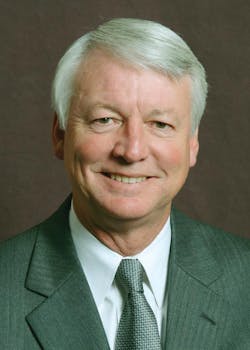Creating Public Involvement
Durham, N.C.
David King
General Manager
Triangle Transit
The Triangle area of North Carolina is expected to double in population in the next 25 years. Helping plan for a future with 2.5 million people challenged us to design innovative ways to engage the public, shape the transit services we provide, and in turn, have those services shape the region’s growth.
As part of a two year analysis of future rail corridors, Triangle Transit involved the public with 17 onsite sessions in three counties, supported by social media and digital video outreach at ourtransitfuture.com. We produced online video clips that served as a virtual tour of the corridors in Durham, Orange and Wake counties, explained the need for transit improvements, the routes to be analyzed, the technologies to be evaluated and how the public could be part of the evaluation process.
Using Facebook and Twitter, we sent hundreds of text messages in the weeks before each of the public sessions and encouraged traffic over the two-year period to help drive interest in the project’s website. Tweets and videos were sent from the meetings as they were taking place. Facebook messages provided project updates and supported text alerts, news releases, print and Facebook ads and media coverage. At the end of the rail analysis phase, more than 1,100 people had attended our sessions and we had more than 79,000 unique page views on our web site. Comments taken at onsite meetings, and provided to us by email, were posted online and available as part of the public record with all project materials in PDF format.
As part of our effort to provide better bus service, Triangle Transit has used Facebook, Twitter and You Tube to promote the routes we have, where they go and any changes to them. This year, when we introduced the first major route changes to the Durham Area Transit Authority in more than two decades, we folded technology into our outreach, providing online digital videos of each new route, giving thousands of daily customers a “seat on the bus” to see where the new route would take them. When monthly transit sessions were held at Durham Station to gather feedback on the changes, public comments were recorded on video to help provide meeting recaps.
During 2012, we had more than 500 postings on Facebook, 800 tweets on Twitter and 40 videos on YouTube involving bus and rail topics. Pinterest was added late in the year to our social media tool kit and photos from our outreach efforts were available on Flickr.
Our use of social and digital media in public outreach hasn’t happened by accident. An interactive media specialist has been part of our communications and public affairs department since 2011 to help market our campaigns for positive outcomes. Digital engagement will not replace traditional participation, but can reach new audiences and increase the overall involvement for projects.
